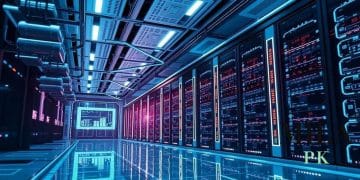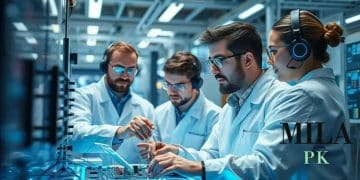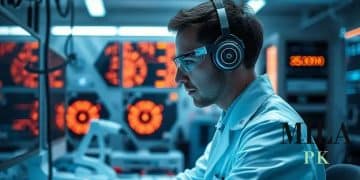Tesla’s FSD project adds 1 billion new miles
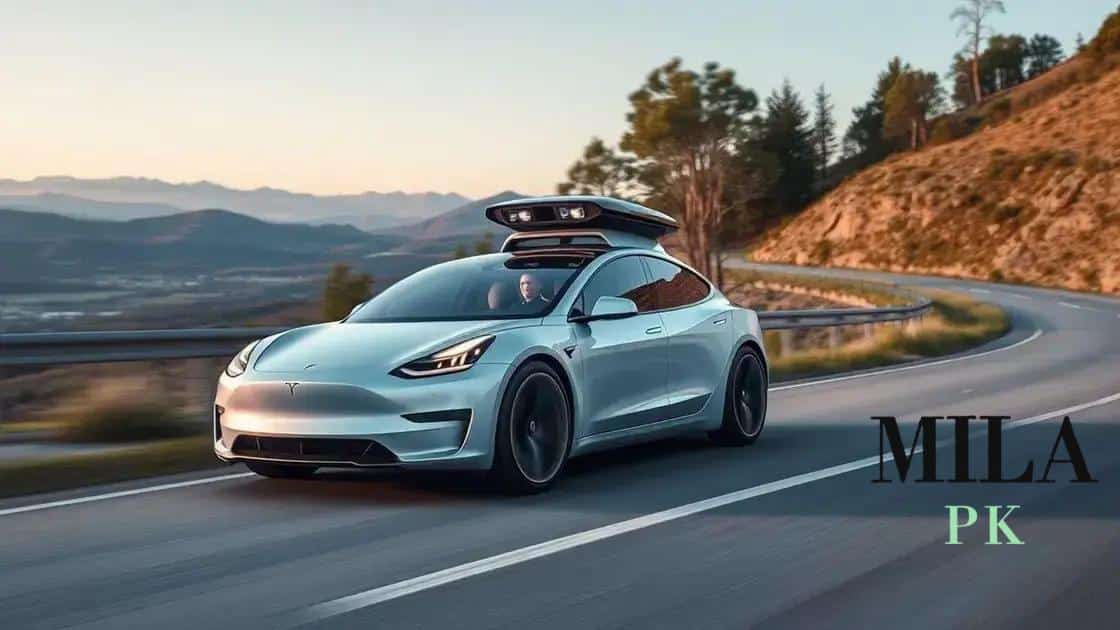
Tesla’s FSD project adds 1 billion new miles, enhancing autonomous driving capabilities through improved safety, better real-time decision-making, and increased public trust while addressing regulatory and technical challenges.
Tesla’s FSD project adds 1 billion new miles of data, a milestone that could significantly enhance the future of self-driving technology. This achievement raises intriguing questions about safety, innovation, and what lies ahead for drivers around the globe.
Understanding Tesla’s FSD technology
Understanding Tesla’s FSD technology involves exploring how this advanced system works and what makes it unique. Tesla’s Full Self-Driving (FSD) technology is designed to enable vehicles to navigate and drive themselves under various conditions.
The core components of Tesla’s FSD technology include machine learning, real-time data processing, and powerful onboard computers. By analyzing data from millions of miles driven, the system continuously improves and learns from its experiences on the road.
The role of machine learning
Machine learning is crucial in making FSD successful. This technology allows Tesla vehicles to:
- Recognize traffic signs and road markings
- Detect and respond to pedestrians and cyclists
- Navigate complex intersections
- Adjust to changing road conditions
These capabilities make driving safer and more efficient. Tesla’s FSD system also utilizes video cameras and sensors to gather information about the environment. This data is processed in real-time, allowing for quick decision-making.
Real-time data processing
The importance of real-time data cannot be overstated. By constantly receiving and processing information from the surroundings, Tesla’s FSD can adapt proactively. This means it can respond to unexpected obstacles or changes promptly.
Tesla’s vehicles share data with a vast network of cars, which helps the FSD system learn from collective driving experiences. This interconnectedness enhances the system’s intelligence over time and contributes to improving safety.
Moreover, Tesla continues to develop its FSD capabilities through software updates. These updates bring new features and improvements, ensuring that the technology keeps up with advancements in autonomous driving.
The future of Tesla’s FSD
Looking ahead, Tesla aims to fully realize its FSD potential, making self-driving cars a common sight. The ongoing efforts to refine and enhance the technology signal a shift towards a more automated transportation future.
As these advancements take shape, regulatory and safety standards will need to evolve, paving the way for widespread adoption of autonomous driving. This transformation will likely redefine how we view personal transportation in the coming years.
Recent advancements in autonomous driving
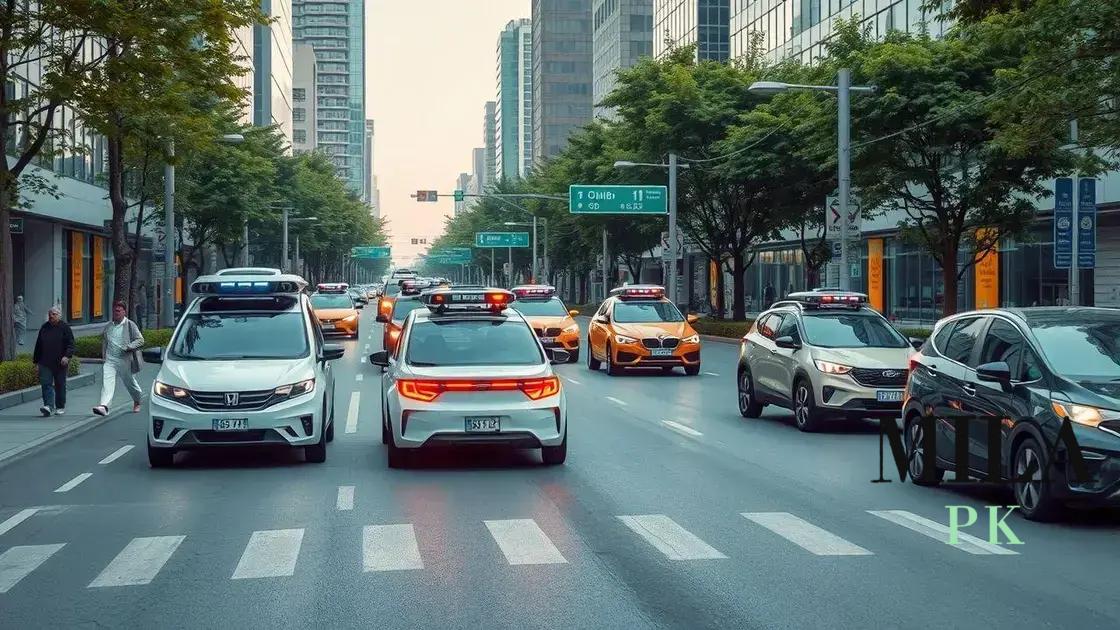
Recent advancements in autonomous driving showcase significant progress in car technology and safety features. Several companies, including Tesla, have made strides that change how we think about transportation.
Many of these advancements focus on improving safety and efficiency. New algorithms are being developed to enhance decision-making in complex environments. This means vehicles can now interpret traffic signals, pedestrians, and other potential obstacles with greater accuracy.
Key technological improvements
Some of the latest updates in autonomous driving technology include:
- Enhanced sensor capabilities that detect a wider range of signals.
- Improved machine learning models for better data processing.
- Collaboration between different manufacturers for shared safety data.
- Increased public and regulatory scrutiny ensuring better safety practices.
These features work together to create a safer driving experience. The integration of advanced machine learning allows cars to learn from each interaction, which is crucial for adapting to real-world driving scenarios.
The role of partnerships and regulations
Partnerships between tech companies and automotive manufacturers are also vital. By sharing data and resources, these collaborations can lead to quicker advancements in safety measures and technology. Moreover, ongoing discussions with regulators ensure that these advancements meet safety standards.
As regulations evolve, they encourage innovation while prioritizing road safety. This balance is essential as self-driving features become more integrated into everyday traffic.
The public perception of autonomous vehicles has also shifted. More people are beginning to trust self-driving technology after seeing its improved safety records and capabilities on the road. This growing trust aligns with the innovations being rolled out today.
Ultimately, the journey towards full autonomy is a roadmap filled with excitement and challenges. As companies continue to innovate, we may soon see self-driving cars become a common sight.
Impact of 1 billion new miles on FSD
The impact of 1 billion new miles on FSD is significant for both Tesla and the autonomous driving community. This vast amount of data enhances the understanding of how vehicles interact with real-world conditions.
By accumulating 1 billion miles of driving data, Tesla’s FSD technology gains insights that help in refining its algorithms. This experience translates into better performance in complex driving scenarios. For instance, with more data, the system can recognize patterns, improving its reaction to sudden changes, like pedestrians entering the road.
Benefits of increased mileage
Some of the benefits from the addition of this data include:
- Improved safety through enhanced decision-making abilities.
- Better navigation in urban environments with various obstacles.
- More effective learning algorithms that adapt to new situations.
- Increased confidence from users and regulators regarding self-driving technology.
As the FSD system processes this extensive dataset, it learns from its mistakes, providing a more reliable driving experience. This learning is compounded as each vehicle continues to gather data, creating a cycle of improvement.
Implications for future autonomy
The addition of 1 billion new miles not only boosts Tesla’s FSD performance but also impacts the entire industry. The more data shared, the faster advancements occur in autonomous driving capabilities. This can lead to wider acceptance of self-driving cars, pushing regulatory bodies to adapt rules and guidelines for these technologies.
As more companies focus on similar data collection efforts, the landscape of transportation is likely to change rapidly. The collaboration within the industry to analyze and implement findings will facilitate a safer and more efficient road system.
Ultimately, the 1 billion miles milestone represents not just a number, but a turning point in the journey toward fully autonomous vehicles.
Challenges faced by Tesla’s FSD project
The challenges faced by Tesla’s FSD project are varied and complex. As the company works to advance its autonomous driving technology, several obstacles hinder its rapid progress.
One major challenge is regulatory approval. Different regions have different rules regarding self-driving cars. These regulations can slow down the deployment of Tesla’s FSD features. Tesla needs to navigate these regulations while ensuring safety and compliance, which is crucial for gaining public trust.
Technical limitations
Another significant hurdle is the technology itself. While Tesla has developed advanced algorithms, no system is perfect. Challenges related to:
- Data processing require constant improvements.
- Interpreting complex driving scenarios can lead to errors.
- Systems must adapt to various weather conditions and unexpected obstacles.
- Maintaining reliability and safety during diverse driving experiences.
Each of these factors demands ongoing attention and innovation from Tesla’s engineering team, which is essential for improving FSD’s performance.
Public perception and trust
The public’s perception of autonomous driving technology can also be problematic. Some people fear self-driving cars and may not trust their safety. Misunderstandings and negative headlines can impact Tesla’s efforts to market FSD effectively.
Addressing these concerns involves transparent communication about how the technology works and the safety measures in place. Educating users can help build trust in the system.
Furthermore, competition is intensifying as other companies enter the autonomous driving space. Tesla must continue to innovate to stay ahead in a crowded market. The landscape is constantly evolving, requiring constant adaptation.
In summary, while Tesla’s FSD project has made impressive strides, it faces several challenges that require thoughtful solutions to ensure its success moving forward.
Future possibilities for Tesla’s autonomous vehicles
The future possibilities for Tesla’s autonomous vehicles are exciting and full of potential. As technology advances, Tesla aims to lead the way in the self-driving car market.
One major possibility is the development of fully autonomous vehicles that require no human intervention. This vision includes cars that can drive on highways, navigate city streets, and park themselves without any help. Achieving this level of autonomy promises to change how people commute.
Advancements in AI and machine learning
Improvements in artificial intelligence and machine learning will be critical. With better algorithms, Tesla vehicles can learn from more data. This learning leads to:
- Enhanced real-time decision-making.
- Increased safety by learning to avoid accidents.
- Better interaction with other road users, including cyclists and pedestrians.
- Adaptation to various weather conditions.
As Tesla collects more data from its vehicles, each car will grow smarter, sharing knowledge with others on the road.
Integration with smart city technologies
Another exciting possibility is the integration of Tesla vehicles with smart city technologies. As cities become more connected, Tesla vehicles could communicate with traffic lights, public transportation, and other infrastructure. This capability could optimize traffic flow and reduce congestion.
The seamless interaction between vehicles and infrastructure can enhance the overall driving experience. Imagine a Tesla that knows when to stop at a red light or when to speed up to catch a green light. This level of interconnectivity can make driving smoother and safer.
Additionally, the potential for ride-sharing services powered by Tesla’s autonomous technology could reshape transportation. With fleets of autonomous cars, ride-sharing could offer an efficient option for those who prefer not to own a vehicle. This initiative may lessen traffic and decrease reliance on personal cars.
Overall, the future for Tesla’s autonomous vehicles is bright, shaped by continuous innovation and the ongoing push toward safer, smarter transportation solutions.
In summary, Tesla’s journey with its Full Self-Driving (FSD) technology holds incredible promise for the future of transportation. The advancements made so far demonstrate the potential for safer and more efficient driving experiences. With ongoing improvements in AI, public trust, and the integration of smart technologies, we can expect significant changes in how we travel. While challenges remain, the path forward is bright with possibilities, as Tesla continues to innovate in the autonomous landscape.
FAQ – Frequently Asked Questions about Tesla’s FSD Project
What is Tesla’s Full Self-Driving (FSD) technology?
Tesla’s FSD technology allows vehicles to navigate and drive themselves with advanced features such as lane changing, traffic control, and parking.
What are the key challenges Tesla faces with FSD?
Key challenges include regulatory approvals, technical limitations of the AI system, public trust issues, and competition from other companies.
How does data from 1 billion new miles improve FSD?
This data helps refine algorithms for better decision-making, improving safety and performance in real-world driving conditions.
What are the future possibilities for Tesla’s autonomous vehicles?
Future possibilities include fully autonomous driving, integration with smart city technologies, and innovative ride-sharing solutions that enhance transportation efficiency.


